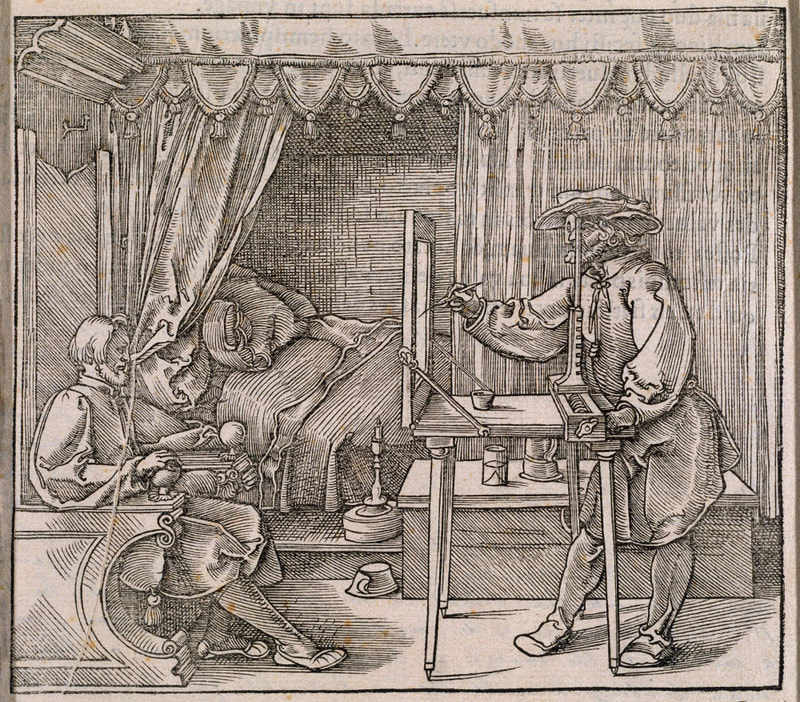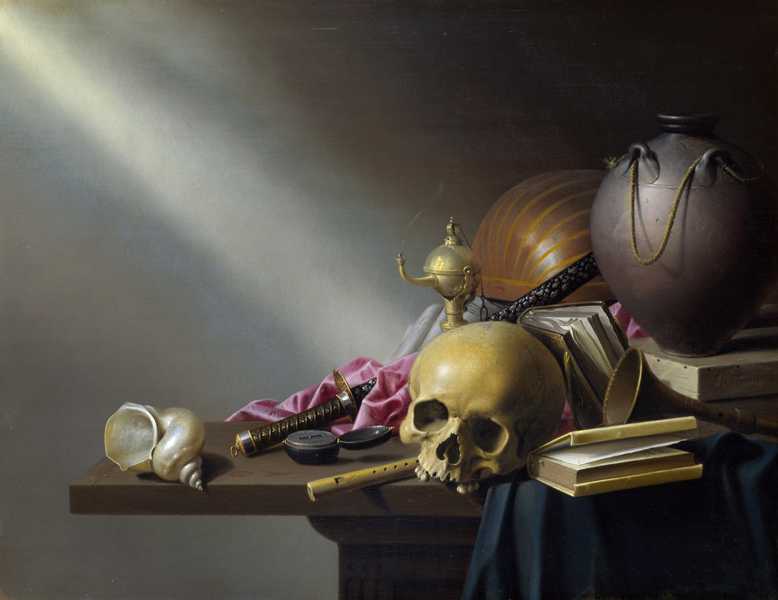TC#4: EXPLORING (& ABUSING) ART HISTORIES
ABOUTThis resource has been designed for KS3 teachers and students (Term 1) and links closely with Threshold Concept 4: Artists use (and abuse) traditions.
KEY THEMES• Why and how different art movements/cultures develop particular art rules and conventions.
• Why and how artists ‘abuse’ established genres and traditions. • How artists and artworks continually influence one another. |
IN PICTURES
The images below have been chosen to encourage initial reflection. Consider them carefully (and how they have been arranged/curated) and then use the following questions to help discussions. You might wish to research the titles/artist names - roll over the image to reveal these.
IN DISCUSSION
The images above have been organised in 3 columns. These might be (loosely) titled as: Portraiture/figurative; Objects/Still Life; Landscapes.
- Do these columns/headings help to further understand and connect the works, or do they raise new issues or questions?
- How might you organise, connect or group these works in alternative ways? For example, which examples do you consider most 'traditional', 'modern' or 'contemporary'? Which works might have the most 'value' - not necessarily financially, but in terms of skill, concept, personal appeal, social value, truth... ?
- What is the role of art and artists, and how/why does this change with time? How might these columns, top to bottom, help explain this?
- Which of these works are the most challenging - to you, to others, to histories and traditions? Why do artists challenge conventions?
- Do artists have to be ‘traditionally’ skilled – and what are ‘traditional art’ skills?
Choose at least two artworks/artists from above to research in more depth. What information (context - facts, opinions, inspirations, histories etc.) help to further your understanding? Some of the links below may help with this.
Dufour’s original work models Enlightenment beliefs and ideas of harmony, Reihana’s reading of the past is darker and more nuanced. The artist draws attention to the complexities of cultural identity and colonisation by including scenes of encounter between Europeans and Polynesians.
Challenging historical and contemporary stereotypes, in Pursuit of Venus [infected] returns the gaze of imperialism with a speculative twist that disrupts notions of beauty, authenticity, history and myth. Read more from the source of this text here.
- Consider how/why this contemporary video response by Maori artist Lisa Reihana challenges the original work by Dufour. Do you think artworks are a reliable source of historical evidence? Why might artists of the past (or present) choose to be selective with what they portray and/or document and the stories that these might tell?
IN words
The following words might prove particularly beneficial to this project:
- Visual elements: line (flow, weight), tone (light and dark), texture (surface), shape (flat, 2 dimensional), form (3 dimensional), space, pattern, colour.
- Measured, perspective, viewpoint, proportion, scaffold, structure; modelled, engraved, decorative; fragmented, disrupted, abstracted; representative, realistic, symbolic; intuitive, expressive; conceptual, metaphorical, allegory
- Conventions, codes, traditional, modern, contemporary, political, controversial
In THE ARTROOM
The following slideshow supports the potential sequence of lessons set out below:
Acts of disruption
- Look carefully at The Threshold Concept 4 illustration. This shows 2 artworks. The first suggests a vase of flowers, the second shows the vase broken and paint (or blood) dripping in the background. You can read more about the influences behind this design here. You might also be interested to know about this artistic act of protest by Chinese artist Ai Weiwei.
- Using a ‘traditional’ vase of flowers as your starting point (this might be a drawing, photograph, collage, enlarged print-out of the illustration... or even an actual vase of flowers!), experiment with adapting, disrupting, ‘abusing' this creatively. How might your vase of flowers be re-interpreted, re-arranged, deconstructed? Will you be led by visual appeal - what looks pleasing to the eye or visually interesting - or will you work in a more conceptual way, perhaps motivated by an issue or injustice you would like to address?
Art Genres (painting)
- The first 5 slides in the presentation share examples of art genres (specifically painting). Choose one slide - History; Genre (scenes of everyday life); Landscape; Still life or Portrait - and consider the differences and similarities in the two works. This might include subject matter, colours, composition, techniques, concept or potential meanings, moods or feelings evoked. You might list these observations under 'similarities' and 'differences'.
- Using drawing or collage experiment with combining elements of these two examples in new ways. How might you adapt the composition (the arrangement) or scale of different elements? What new aspects - objects, people, structures etc. might you introduce that connect with (or disrupt) this genre?
Playing with Portraits
- Leonardo da Vinci's portrait of Mona Lisa is probably the world's most famous portrait. There are a variety of reasons for its high profile fame. It might be suggested it is now most famous for being famous - a symbol (icon, even) for traditional 'art' and portraiture. Because of this, many artists have responded to, or 'played' with, this portrait, with various motivations and opinions about the work and its status. Research a variety of responses to the Mona Lisa - and the portrait itself. Consider which appeal to you most and why.
- Respond to the Mona Lisa in your own creative way. How might you create something that is distinctly different yet connected in some way, either visually, contextually or conceptually. This might be through drawing or painting with traditional materials, or something more experimental such as sculpting with everyday objects, or using collage, performance, film or audio recordings.
Exploring Still life
A Still Life is a work of art depicting inanimate objects. They have been produced by artists for thousands of years, discovered on the walls of Egyptian tombs and within Ancient Greek and Roman mosaics and frescos. Over time, within different countries and cultures, various styles and approaches to Still Life have been established. Artists might produce Still life works as a way of celebrating the qualities of certain subject matter - the beauty of flowers, ornate glass or jewellery etc. - and in doing so practice and show-off their skills. Still life has also been popular for decorative means - a painting of a vase of flowers on the wall is unlikely to offend anyone - and therefore appealing to artists wanting to earn an income. More than this, Still life objects have often been utilised for their symbolic or metaphorical potential, a way of suggesting stories or representing something (or someone) in a more subtle or subversive way. For these reasons artists continue to return to creating Still life works, often referencing or responding to established traditions be it with admiration or more provocative intent. A good example of this is Matt Collishaw's photography series, 'Last meals on Death Row', inspired by 16th Century Vanitas paintings.
- What objects for a Still life response would you choose to represent you; someone else important to you; an issue that you would like raise awareness of? How might your selections and their composition help suggest deeper meaning?
- Now imagine you are someone else, someone less fortunate than yourself. Who could you 'give a voice to' via a Still life? How might you use a Still life to raise awareness or 'speak truth to power' on behalf of someone else? Research your chosen person/issue carefully and aim to avoid stereotypical representations.
- Within the slideshow, carefully study the 17th century Dutch Still Life by Harmen Steenwyck. List the objects included in this painting; make notes on other factors such as lighting and composition. Why have these objects been chosen and arranged in this way? What might the various objects represent - be symbolic of? How does the title 'An Allegory of the Vanities of Human Life' help understanding? Could this also be considered a religious or political artwork and/or a warning? How might you create a contemporary Still life based on present day issues - fears, anxieties, or (misguided) behaviours?
- Consider the range of Still life examples in the slideshow. How might you use your own Still life to experiment with different styles, techniques and ways of recording? For example:
- drawing skills - for example, focusing on Line, Tone, Shape, Form, Texture, and/or Shape.
- abstraction - for example, experimenting with multiple viewpoints, overlaying objects, collaging with mixed media, simplifying what you see.
Ready-mades, assemblages and Objects within Performance Art
The slideshow shares examples of a range of works where objects are not simply responded to through being drawn or painted, but instead are utilised, embraced and appropriated in more direct ways, physically and conceptually. Artists have used objects to provoke new thinking and actions - and not just about the objects as 'things' (their material properties, purposes and associations) but about wider issues relating to human behaviour and society. Research the names and works to find out more and then consider how you might:
- Work in 3 dimensions to reconstruct/re-interpret a Still life (or a flat artwork of a Still life) using cardboard (cutting, tearing, folding, slotting, joining...).
- Create an assemblage using found or recycled materials or objects. Experiment with unusual ways of joining, combining and bringing together objects/materials that might not usually combine.
- Design and present a short performance/interaction with objects that addresses an issue that is important to you. This might raise awareness or challenge existing perceptions. It might involve audience participation or be even performed in an unusual location or public space. (To be discussed and agreed with your teacher/parents or carers to ensure this is safe).
ART IS A SUBSTITUTE FOR VIOLENCE. THE SAME IMPULSES THAT DRIVE PERSONS TO VIOLENCE — THE HUNGER FOR MEANING, THE NEED FOR ECSTASY, THE IMPULSE TO RISK ALL — DRIVE THE ARTIST TO CREATE. HE IS BY NATURE OUR ARCHREBEL. … THE ESSENCE OF THE REBELLION IS IN THE NEW WAY OF SEEING NATURE AND LIFE. ROLLO MAY
FURTHER READING
- Ernst Haeckel Human Forms in Nature
- Harmen Steenwyck - Vanitas Still life ArtyFactory
- Intent in the making: the life of Zoe Leonard's 'Strange Fruit' Burlington Contemporary
- Explore the art of Vija Celmins Tate Resource
- Robert Rauschenberg Artsy.net
- Landscape Then and Now British Art Studies
- Keith Tyson: Still Lifes
- Nam June Paik’s TV Buddhas
- John Outterbridge and the Art of the Assemblage














